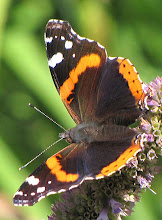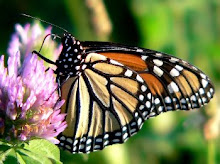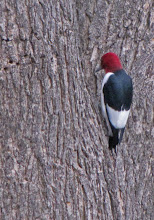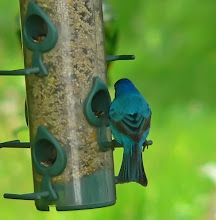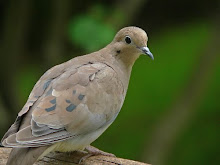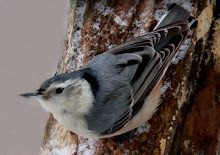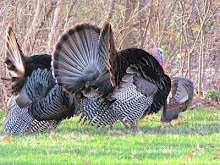I have to turn the dreaded word verification back on, much as I hate to do it. Someone is determined to advertise in my comment space and we can't have that kind of thing. Nobody at this site is interested in his hobby! I hope it won't be for long and ask that you put up with the inconvenience for a brief time.
This season I added a few plants I've never grown before. It's always fun to try something new and hope they do well in my garden.
Since I have a spot of very heavy clay in one small area, I decided to move the Morning Light miscanthus which was struggling and replace it with two eupatoriums, Phantom and Chocolate. Neither of these is drought tolerant which goes against the prime directive, but they may do well enough in this moisture retaining clay. Phantom has grown very well and is beginning to bloom. Chocolate has nice dark foliage that will make a good contrast even when not blooming.

Stokesia, Peachie's Pick, was an impulse purchase. My garden needed more late blooming perennials and this one is drought tolerant. Pretty colored blooms and a very neat habit. It's a big advantage when I can buy a plant already in bloom. No discovering later it was mislabeled or just not the color I had hoped for.

My daylilies from Gilbert Wild arrived right on schedule. Nice large roots. They always include a free one too. Thought I'd have to wait until next summer to see the first blooms but one promptly sent up a bloom scape the minute it was in the ground so I may get a preview. I considered cutting back the scape to conserve the plant's energy but decided it wouldn't matter much in the long run so I'm going to let it bloom. These are the only plants in this group that are not loved by butterflies and bees.

Boltonia Jim Crockett is a pretty, pale blue shade and not nearly as large as the common boltonia. Another plant to give me some late season color. The two I purchased are blooming now a little ahead of schedule. The flowers are bluer than they appear in this full sun photo.

I love goldenrods but the beautiful plants growing wild in the fields and roadsides are a little too rambunctious for the perennial border. I bought Firecracker at a plant sale this spring. It is the tallest and will bloom later in August and September. Found a second smaller cultivar, Golden Fleece, in early summer and yet another, Baby Gold on sale just a week ago. The photo is of Baby Gold. I like it so well, if I had room I'd add a couple more.

Here's an example of buying a plant not in bloom and then wondering what it is. This achellia was labeled Terra Cotta but I don't think so, too pink. What ever it is, I like it. The blooms fade as they age and make an interesting variety of color. Next year maybe I'll stumble across Terra Cotta and try again.






















































